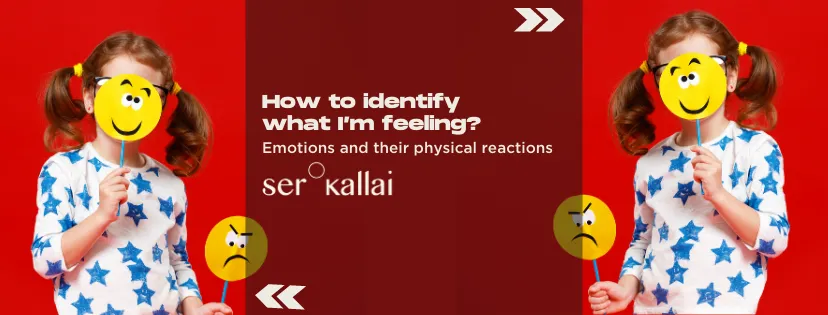Emotions are experienced by all human beings, but despite recognizing that they exist, many people do not have a real awareness of their importance in daily interactions and the body's reactions to them. To enter this world of emotions, it is important to identify the way we feel and the physical responses that are immersed in each sensation.
For some years now, the concept of emotional intelligence has gained strength, becoming an essential part for integral human development. Daniel Goleman (1995), pioneer of this term, defined emotional intelligence as “the ability to recognize our own feelings and those of others”. Additionally, Salovey and Mayer (1990) emphasized the importance of emotions in adaptive and intellectual processes, reiterating that emotional intelligence is “the ability to monitor one's own feelings and emotions and those of others, to discriminate between them and regulate them, using this information to solve problems” (Olvera, Domínguez & Cruz, 2002).
According to Goleman (2001), emotionally developed people, those who adequately govern their emotions and who know how to interpret and effectively relate to the emotions of others, enjoy significant advantages in different areas of their lives, due that they tend to have greater satisfaction, efficiency and self-control, unifying the cognitive area with the emotional area (Vivas, Gallego & Gonzalez, 2007).
To begin developing emotional intelligence, it is essential to identify what we feel, expand our emotional "literacy" and recognize our bodily reactions when experiencing them.
How to assertively identify emotions?
The PUR system - Perceiving, Understanding, Regulating, is one that brings together the necessary processes to consciously understand emotions, recognize their impact, and generate strategies to navigate them effectively in specific circumstances. These three concepts are defined by Vivas, Gallego & Gonzalez (2007) as follows:
1. Perceiving: Consciously recognizing emotions, identifying what we feel and being able to give it a concept.
2. Understanding: Integrating what we feel of our thinking and recognize the complexity of emotional changes.
3. Regulating: Navigate pleasant and unpleasant emotions effectively.
According to the above, we highlight the importance of emotional intelligence to identify and recognize our emotions as a cross-cutting axis of life and likewise, as a strategy to develop resilience in the face of adverse situations that we encounter daily.
What are the main emotions that exist?
Over the years, various models have been made to explain emotions. According to Robert Plutchik's scientific model, there are eight basic families composed of low, medium, and high intensity emotions, which are joy, sadness, fear, disgust, surprise, anticipation, anger, and trust. Plutchik, who created the wheel of emotions to illustrate the role of each one of them in a person, showed that emotions are neutral, that is, they are not positive or negative, but can be perceived as pleasant or unpleasant, thus becoming a guide that helps us survive and focus our attention on what drives us towards a specific action (Six Seconds, 2018).
The perception of seeing emotions as neutral, without antagonizing them, allows us to see emotions as messages about what happens to us externally and internally. For instance:
- Anger is a sign that the road is blocked or there is a possible threat, stirring a response to fight or overcome obstacles.
- Joy focuses us on an opportunity that motivates us to feel happiness and tranquility, cultivating the desire to repeat those events that generate those pleasant sensations.
How do emotions feel in the body?
Emotions are important messages that come from the brain to all parts of the body. To understand their effects on a physical level, it is important to understand that emotions are electrochemical signals with energy levels that contain information about what is happening externally.
Neuroscientist Candace Pert explains in her book "The Physics of Emotion" that neurotransmitters called peptides travel through the body and brain, constantly changing the chemistry of each cell and sending vibrations to other people. As a result of the molecules of emotion and the constant change of our feelings, peptides carry emotional messages, generating reactions such as "butterflies in the stomach" when there is fear, crying when there is sadness, or acceleration in the heart and redness the face when it comes to anger (Six Seconds, 2007).
(To know the difference between emotions, feelings and moods, click here)
According to the map of emotions developed in the research by Nummenmaa, Glerean, Hari & Hietanen (2013), emotional feelings are associated with bodily sensations, which could be at the center of the emotional experience, causing certain temperatures in specific areas of the body, facilitating the awareness, understanding and regulation of emotions. In this way, asking yourself "Where do I feel my emotions?" it will allow greater literacy and strengthen emotional intelligence.
Strategies to promote emotional intelligence
SER-KALLAI is focused on promoting the integral development of emotional intelligence through the recognition of emotions and the appropriate strategies to navigate them. To do this, we offer you four strategies:
1. Perceive your body:
Mindfulness of the body and the areas where emotions are felt will allow us to identify what is being experienced, understand and make physical sensations aware and, therefore, increase emotional literacy.
2. Give the emotion a name:
Being aware of what is being felt and expanding the lexicon of the variants of emotions, will lead to generating actions that mitigate the impact of unpleasant sensations and generating actions that are pleasant.
3. Navigate emotions:
It is not about repressing emotions or antagonizing them as negative. Changing the perspective from "control" to "navigation" of emotions will allow us to see the messages behind each of them and identify opportunities to have effective and healthy reactions in the face of specific circumstances.
4. Recognize patterns:
Identify the events, words, and circumstances that elicit specific emotions and reactions. Being aware of recurring actions in the face of pleasant and unpleasant emotions, as well as your physical sensations, will allow you to recognize them more quickly and navigate them effectively.
Emotions are essential in our daily interactions, influencing how we think and act. Recognizing them as sources of information about what happens inside and outside of us, will allow them to be assets and strategic pieces for making optimal decisions, strengthen who we are and what we do in our daily lives.
References
- López, Y. O., Trejo, D. B., & Martínez, C. A. (2002). Inteligencia emocional: Manual para profesionales en el ámbito industrial. México: Plaza y Valdés.
- Vivas, M., Gallego, D. J., & González, B. (2007). Educar las emociones. Madrid: Dikinson.
- Miller, M. (2021, March 12). 7 amazing facts about emotions you should Know. Retrieved April 07, 2021, from https://www.6seconds.org/2018/02/19/7-amazing-facts-emotions/


